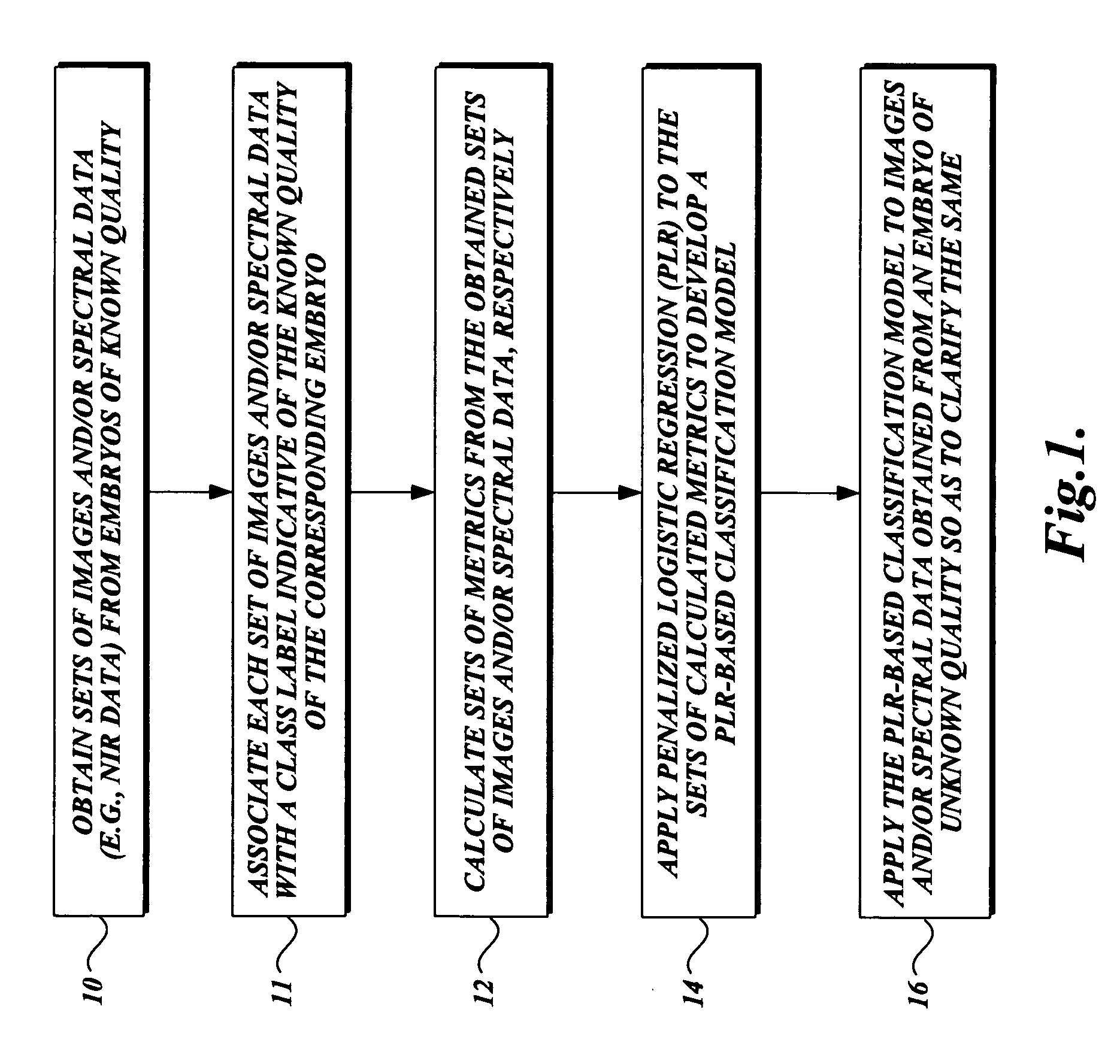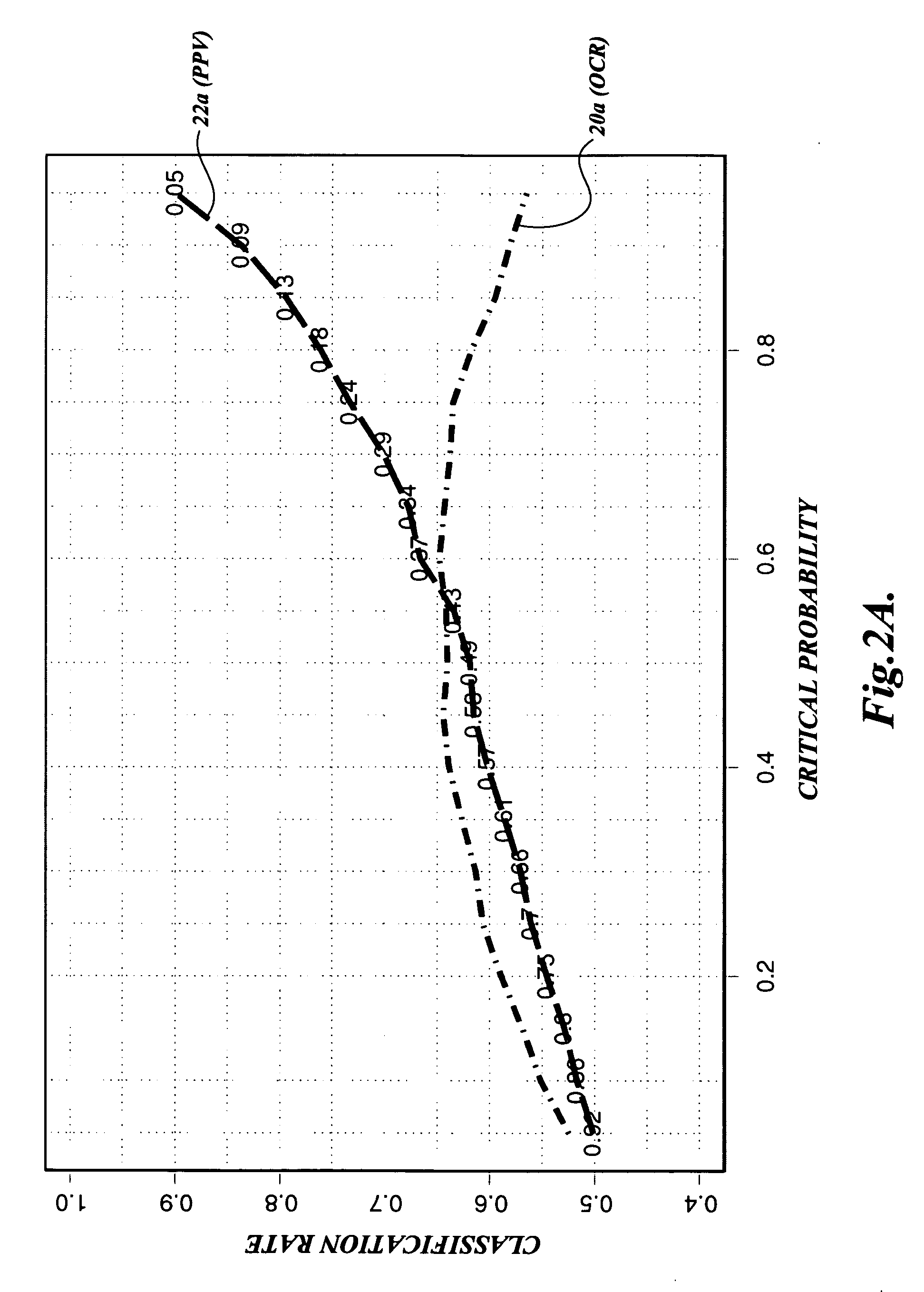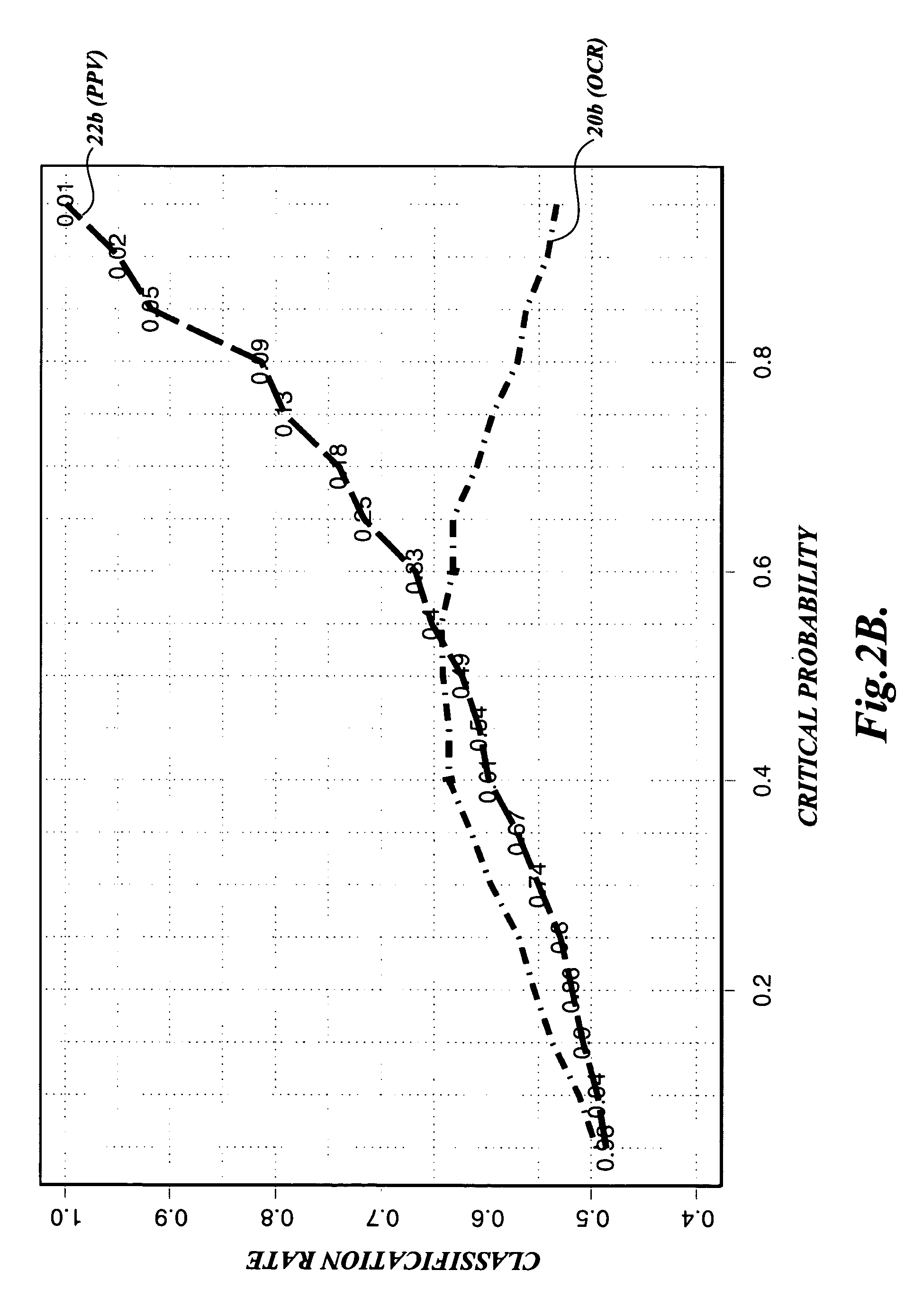Method of classifying plant embryos using penalized logistic regression
a technology of logistic regression and plant embryos, applied in the field of classification of plant embryos, can solve the problems of high cost, labor intensive and subjective, high labor intensity,
- Summary
- Abstract
- Description
- Claims
- Application Information
AI Technical Summary
Problems solved by technology
Method used
Image
Examples
examples
[0038] Three genotypes (56, 68, and 75) of somatic embryos were used to develop and test PLR-based classifiers. NIR reflectance data were obtained from somatic embryos of known quality (thus associated with certain class labels), and PLR analysis was performed on the NIR data sets. Predictive models for embryos' germination tendency were built based on PLR analysis, and their predictive accuracy was assessed using cross-validation. A reduced summary of some of the results are shown in the tables below.
TABLE 1(GENOTYPE 56)Penalty = 0.01Penalty = 0.1Penalty = 1PcritOCRPPVPPFOCRPPVPPFOCRPPVPPF0.50.640.620.490.640.630.490.640.630.470.750.640.730.140.600.790.130.550.910.030.850.600.800.130.560.920.05NANANA
[0039]
TABLE 2(GENOTYPE 68)Penalty = 0.01Penalty = 0.1Penalty = 1PcritOCRPPVPPFOCRPPVPPFOCRPPVPPF0.50.710.710.510.750.730.630.750.720.550.750.700.790.350.660.790.280.620.880.140.850.670.820.270.620.830.160.531.000.03
[0040]
TABLE 3(GENOTYPE 75)Penalty = 0.01Penalty = 0.1Penalty = 1PcritO...
PUM
| Property | Measurement | Unit |
|---|---|---|
| size | aaaaa | aaaaa |
| shape | aaaaa | aaaaa |
| surface texture | aaaaa | aaaaa |
Abstract
Description
Claims
Application Information
 Login to View More
Login to View More - R&D
- Intellectual Property
- Life Sciences
- Materials
- Tech Scout
- Unparalleled Data Quality
- Higher Quality Content
- 60% Fewer Hallucinations
Browse by: Latest US Patents, China's latest patents, Technical Efficacy Thesaurus, Application Domain, Technology Topic, Popular Technical Reports.
© 2025 PatSnap. All rights reserved.Legal|Privacy policy|Modern Slavery Act Transparency Statement|Sitemap|About US| Contact US: help@patsnap.com



